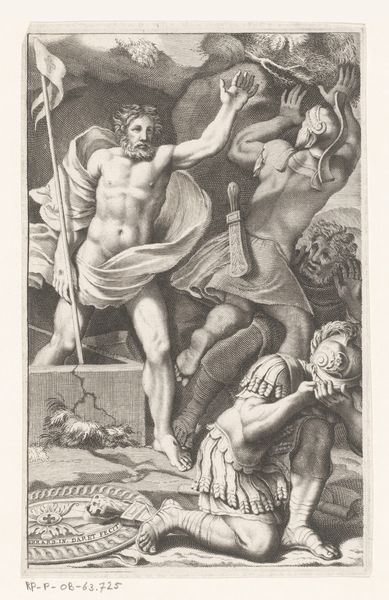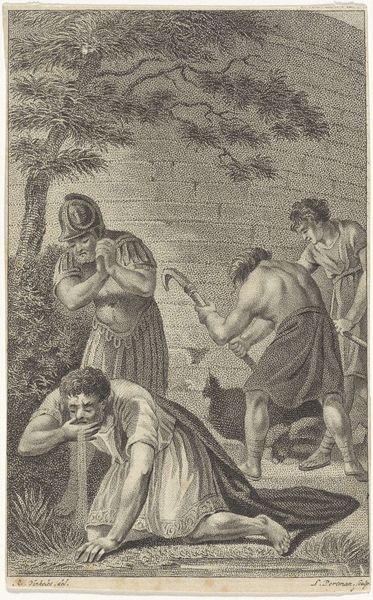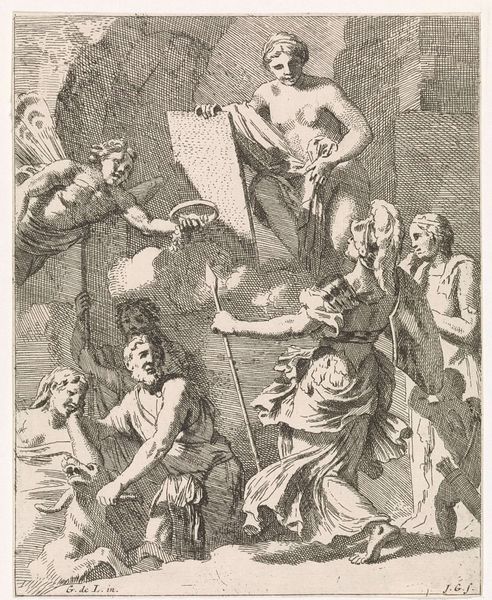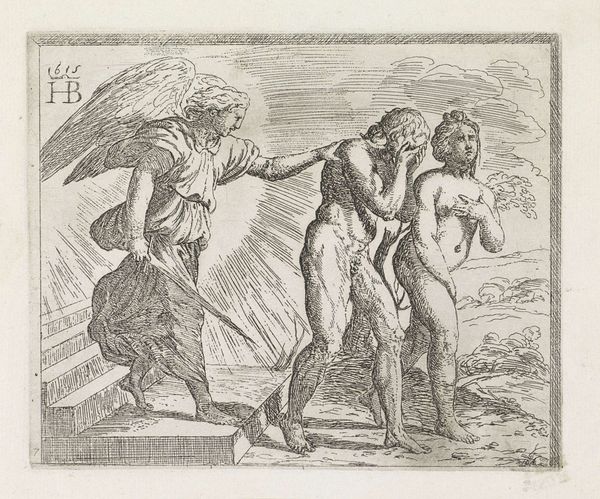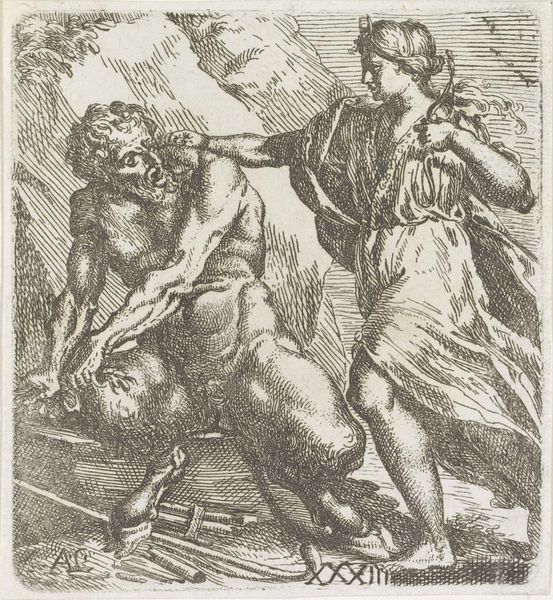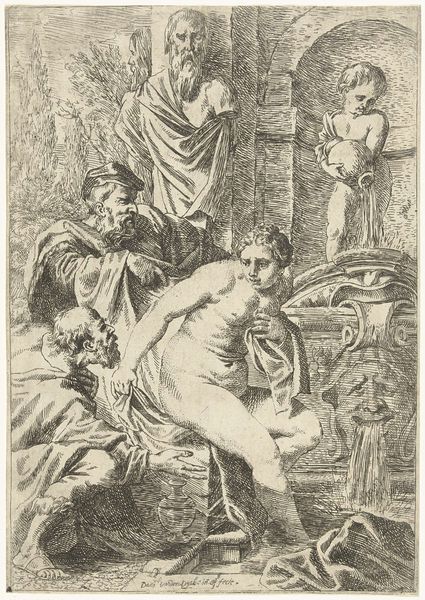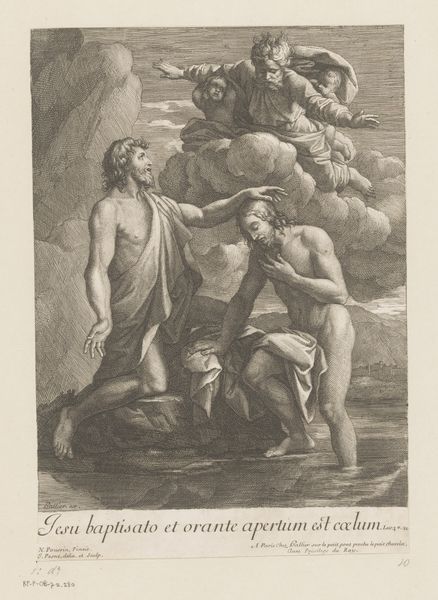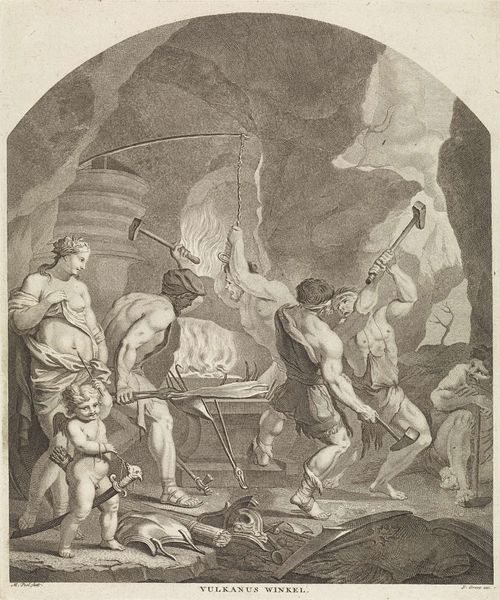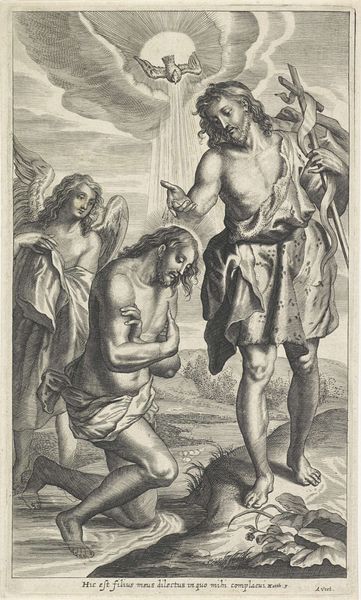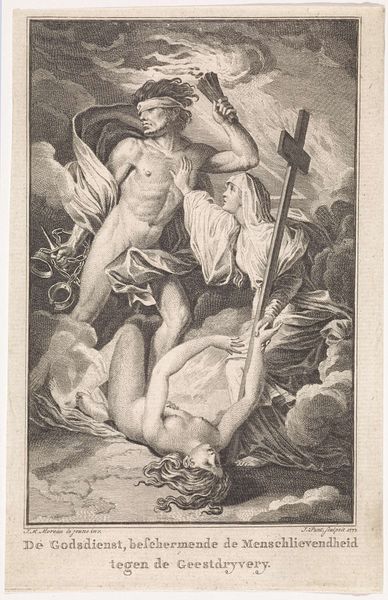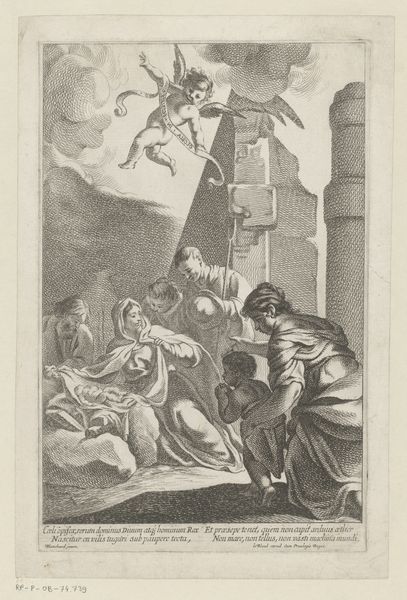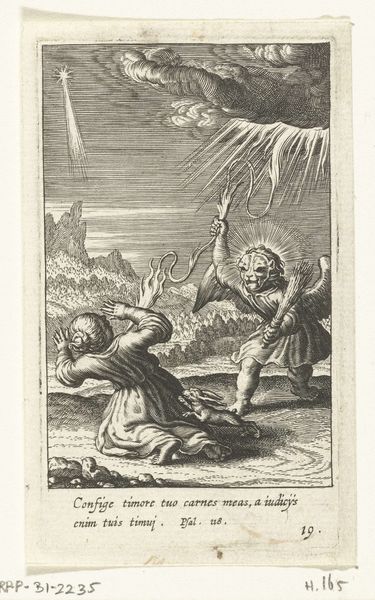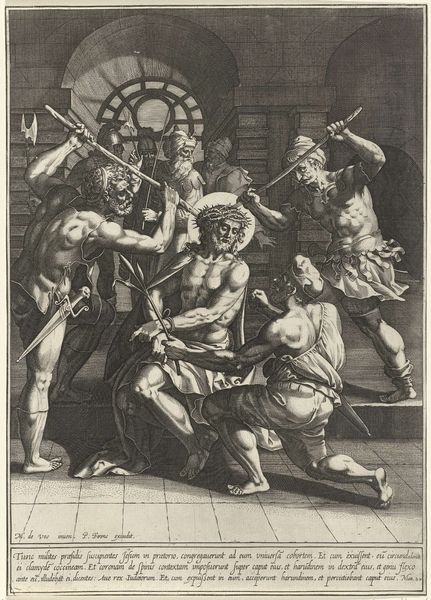
Lokale bevolking op het eiland Kamtschatka ontvangt gasten in hun huis 1803
0:00
0:00
engraving
#
portrait
#
old engraving style
#
figuration
#
romanticism
#
19th century
#
genre-painting
#
history-painting
#
engraving
Dimensions: height 115 mm, width 75 mm
Copyright: Rijks Museum: Open Domain
Curator: Welcome. Before us is "Lokale bevolking op het eiland Kamtschatka ontvangt gasten in hun huis," an engraving crafted in 1803 by Lambertus Antonius Claessens. Editor: It's striking, the high contrast creates a dramatic scene. The composition centers around figures, seemingly caught in a moment of offering, a strange ritual. Curator: Indeed. Considering its creation in the early 19th century, this work falls within the Romanticism movement, yet it depicts an ethnographic subject, the indigenous people of Kamchatka welcoming guests. We must examine this representation with a critical lens, acknowledging the power dynamics inherent in depicting marginalized communities through a Western gaze. Editor: From a formal perspective, observe how Claessens uses line and shading to define the figures and create a sense of depth. The light source, presumably the fire, illuminates their bodies, emphasizing their physicality and directing our eye towards the central act of hospitality. The hatching and cross-hatching creates an almost palpable texture. Curator: It is precisely that assumed “hospitality” that demands scrutiny. The print circulated in a period marked by exploration and colonialism. Works such as this one not only reflect, but also actively shaped, Western perceptions of non-European cultures. The gaze and narrative are fraught with potential for exoticism and, worse, misrepresentation, bolstering a civilizing narrative. Editor: Agreed. But the image also displays, technically, a balance—despite the high drama and exotic subject. The dark values around the figures force them into sharp relief, while a formal linear structure supports that relationship between foreground and background elements. I find it is technically successful, even moving in how stark its contrast appears to be. Curator: This piece opens dialogues about cultural representation and historical power, doesn't it? It demands that we reflect on the visual narratives we've inherited. Editor: It's definitely compelling—to view a range of forms in close alliance this way. A fascinating exercise.
Comments
No comments
Be the first to comment and join the conversation on the ultimate creative platform.
